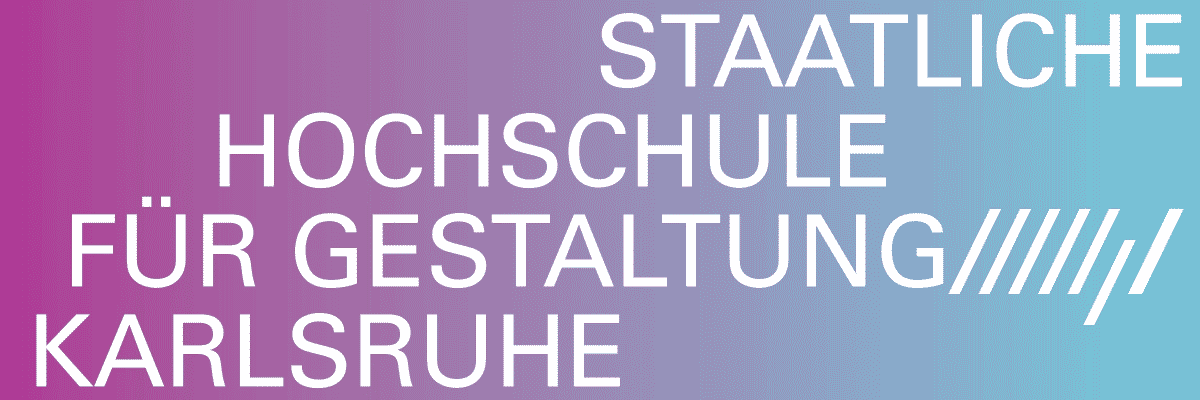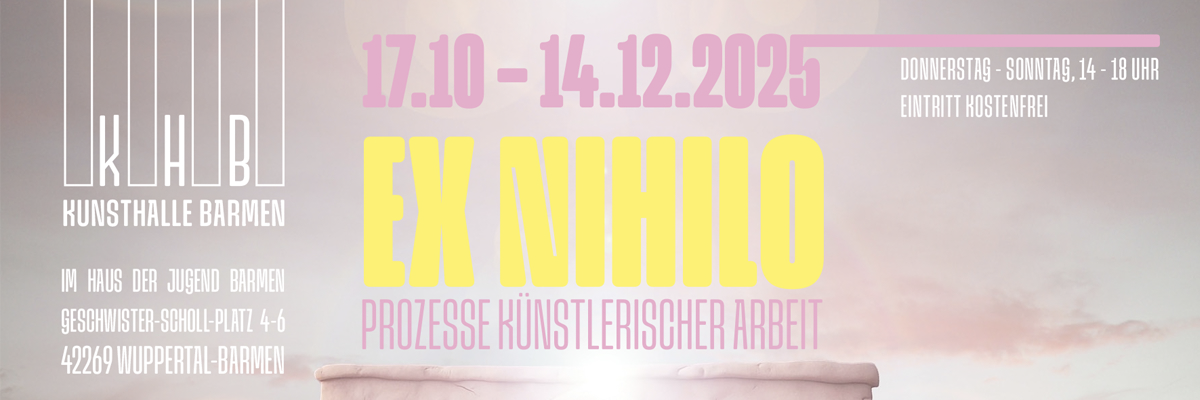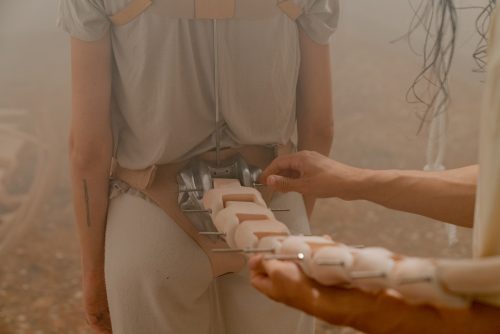
Laurel Chokoago, Elisa Goldammer, Maik Gräf, Almut Hilf, Maximilian Koppernock, Mitko Mitkov, Caspar Sänger, Jenny Schäfer, Wiebke Schwarzhans, Dirk Stewen, Daniela Zeilinger, Mira Anneli Naß
DESTROY PHOTOGRAPHY / FOTOGRAFIE ZERSTÖREN
Project Info
- 💙 FRISE Künstler*innenhaus Hamburg
- 💚 Maik Gräf, Jenny Schäfer
- 🖤 Laurel Chokoago, Elisa Goldammer, Maik Gräf, Almut Hilf, Maximilian Koppernock, Mitko Mitkov, Caspar Sänger, Jenny Schäfer, Wiebke Schwarzhans, Dirk Stewen, Daniela Zeilinger, Mira Anneli Naß
- 💜 Mira Anneli Naß
- 💛 Maik Gräf
Share on

Daniela Zeilinger, Almut Hilf, Maik Gräf
Advertisement

Daniela Zeilinger: dots #1 & dots #2 - 2023/2024, Glass plate coated with photo emulsion and exposed in analogue, photogram on baryta paper, paper, clip frame50×40 cm, unique piece

Maik Gräf: My Whole Being - 2024, bleached silver gelatine prints on baryta paper, clip frame, text fragment by Didier Eribon40×50 cm, unique pieces

Almut Hilf: Untitled - 2024, laser print on foil, glass, 50×40 cm, unique pieces

Laurel Chokoago, Elisa Goldammer, Wiebke Schwarzhans

Laurel Chokoago: 4 hrs - 2020/21, analogue photographs, pigment print on Hahnemühle Baryta, clip frame, 50×40 cm, unique piece

Dirk Stewen: Untitled - 2023, inkjet print and ink on paper and photo paper, clip frame, 59.4×42 cm, unique piece

Jenny Schäfer, Caspar Sänger, Mitko Mitkov

Dirk Stewen: Untitled - 2023, inkjet print and ink on paper and photo paper, clip frame, 59.4×42 cm, unique piece

Almut Hilf: Untitled (Detail) - 2024, laser print on foil, glass, 50×40 cm, unique pieces

Maximilian Koppernock, Elisa Goldammer, Wiebke Schwarzhans, Mira Anneli Naß

Caspar Sänger, Daniela Zeilinger, Almut Hilf, Maik Gräf

Caspar Sänger, Laurel Chokoago, Mitko Mitkov, Maximilian Koppernock

Mira Anneli Naß: Untitled - 2024, Text

Elisa Goldammer: It was all very different - 2023, 2× 2 hand prints (baryta paper), spider paper, paper, clip frame, 50×40 cm, unique pieces

Elisa Goldammer, Wiebke Schwarzhans, Mira Anneli Naß

Mitko Mitkov: A nice pair - 2024, lithograph on laid paper, clip frame, 40×50 cm, Edition 3

Maximilian Koppernock: In And Out - 2024, Archival Fine Art pigment prints in two clip frames, overlaid with printed glass plate, 130×40 cm, Edition 1/2 + 1 AP

Caspar Sänger: Capture - 2023, inkjet print, clip frame, 45×34 cm, unique piece

Wiebke Schwarzhans: Brilliant Cut - 2024, Fashion magazine page processed with scalpels, mirror, hardboard, mirror clamps, 40×50 cm, unique piece
The destruction of photography evoked in the exhibition title can be conceptualised in various ways. Firstly, it concerns photographic materiality(ies): in the digital age, a data set on a computer or smartphone seems to be very easy to change or delete. However, this attempt leaves a trace, and the (original) image can be forensically reconstructed long after the deletion process. There are also often copies of a photo in the cloud or screenshots of a post: the "avenging angels of photography". [1] The situation is different with analogue photography: the photo - the print - has to be torn, cut up, the surface painted over or scratched, the scraps of paper - and finally the negative - burnt. This also leaves a trace - the ash - but it cannot be reassembled. In the sheer endless mass of photographs that are (re)produced and shared online every second, many images remain invisible. This also applies to the vast quantities of photographs in private family albums that nobody looks at any more. A picture that is not looked at - that can also be a form of destruction. But perhaps all these unseen photos will still exist even when there are no more people around, and they will continue to circulate endlessly like rubbish in space. In any case, the photography industry is closely interwoven with the production of waste and thus also with the environmental changes of our time: from the mining of salt, copper or silver for early analogue photo production to the CO2 emissions that result from the storage of digital images.
Photography has always been characterised by a dialectic of preservation and destruction. This also applies to the history(ies) of the photographic medium, as well as photography as a medium of historiography. Memories flash up in the photographic image. It can help to evoke or preserve history(ies) and has the potential to serve as a reminder. However, photographs also construct history(ies) and thus contribute to the prevailing social order. They stabilise ideologies and systems and the myths they need: Capitalism, patriarchy, racism, anti-Semitism, etc. They convey an image of something and are thus at the same time an elementary component of its construction. These myths are perpetuated in the iconographic afterlife of the images. Photographs can simultaneously undermine systems by making visible what should remain invisible, or by attempting to give a different image of something. This can be used subversively and progressively, but also reactionarily and regressively. This is how history can be destroyed by photography(s). So how can the history of a photograph be destroyed? The memory of a photograph seems to have a long life: as long as someone remembers a photograph or images are described in texts, the history of a photograph can last. However, photographs can be removed from their context of origin and original use through decontextualisation or recontextualisation. This harbours pitfalls: Even the most violent pictorial object can be aestheticised in this way and traded, marketed and exhibited as a work of art: the military reconnaissance image thus becomes a symbol of modernist abstraction, the photograph of the suffering of others a fetish image.
Countless theories of photography also state that there is no photography without destruction. "To photograph," wrote cultural critic Susan Sontag, "is to participate in mortality, vulnerability (...). Precisely by singling out this one moment and allowing it to freeze, all photographs bear witness to the inexorable passage of time." [2] In the history of photography, the destruction of a moment, death, is an established topos. In her study Die Tode der Fotografie (The Deaths of Photography), Katharina Sykora analysed death photography as an early social use of the medium: Photography as an attempt to halt bodily decay. [3] Roland Barthes also wrote in Die helle Kammer that photography places death in the future. [4] The task of a (theoretical) work of image criticism, on the other hand, is to penetrate and destroy a prevailing surface fetishism - the concentration on the meaning of a photograph. For the "meaning of images", wrote Vilém Flusser in his essay For a Philosophy of Photography, "lies on the surface. It can be grasped at a single glance - but then it remains superficial." [5] It is therefore necessary to reveal - and thus deconstruct, destroy - the logics and ideologies of photography, i.e. its conditions of production, contexts of use and mechanisms of value creation, its promises, in order to come closer to a reality behind the images. [6]
[1] Paul Frosh: Screenshots. Avenging Angels of Photography, Berlin 2019.
[2] Susan Sontag: On Photography, Frankfurt am Main 2011, p. 21.
[3] Cf. Katharina Sykora: Die Tode der Fotografie I, Munich 2009.
[4] Cf. Roland Barthes: Die helle Kammer, Frankfurt am Main 1985.
[5] Vilém Flusser: For a Philosophy of Photography, Berlin 1983, p. 8.
[6] On the theory of the logistic image, see Allan Sekula: Photography Against the Grain. Essays and Photo Works 1973-1983, Halifax 1984; for a feminist analysis of the politics of photographic critique, history and practice: Abigail Solomon-Godou: Photographyat the Dock. Essays on Photographic History, Institutions, and Practices, Minneapolis 1991.
Mira Anneli Naß




